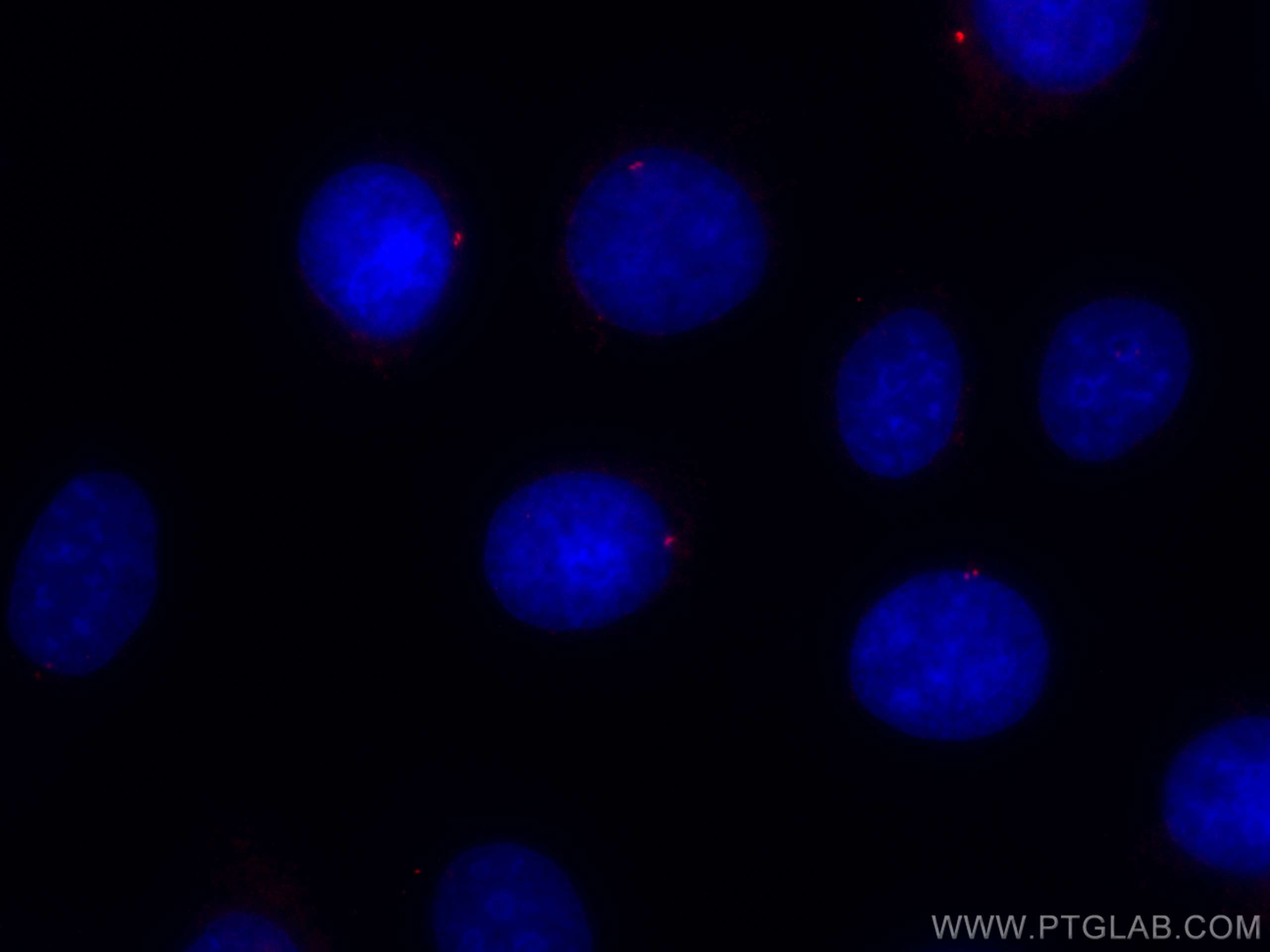验证数据展示
经过测试的应用
| Positive IF/ICC detected in | HeLa cells, MCF-7 cells |
推荐稀释比
| 应用 | 推荐稀释比 |
|---|---|
| Immunofluorescence (IF)/ICC | IF/ICC : 1:50-1:500 |
| It is recommended that this reagent should be titrated in each testing system to obtain optimal results. | |
| Sample-dependent, Check data in validation data gallery. | |
产品信息
CL594-14498 targets CEP250/CNAP1 in IF/ICC applications and shows reactivity with human samples.
| 经测试应用 | IF/ICC Application Description |
| 经测试反应性 | human |
| 免疫原 | CEP250/CNAP1 fusion protein Ag5925 种属同源性预测 |
| 宿主/亚型 | Rabbit / IgG |
| 抗体类别 | Polyclonal |
| 产品类型 | Antibody |
| 全称 | centrosomal protein 250kDa |
| 别名 | 250 kDa centrosomal protein, C NAP1, Centrosomal protein 2, centrosomal protein 250kDa, CEP2, CEP250, CNAP1 |
| 计算分子量 | 281 kDa |
| GenBank蛋白编号 | BC001433 |
| 基因名称 | CEP250/CNAP1 |
| Gene ID (NCBI) | 11190 |
| RRID | AB_2919808 |
| 偶联类型 | CoraLite®594 Fluorescent Dye |
| 最大激发/发射波长 | 588 nm / 604 nm |
| 形式 | Liquid |
| 纯化方式 | Antigen affinity purification |
| UNIPROT ID | Q9BV73 |
| 储存缓冲液 | PBS with 50% glycerol, 0.05% Proclin300, 0.5% BSA , pH 7.3 |
| 储存条件 | Store at -20°C. Avoid exposure to light. Stable for one year after shipment. Aliquoting is unnecessary for -20oC storage. |
背景介绍
CEP250, also known as C-Nap1, is a 250 kDa coiled-coil protein that localizes to the proximal ends of mother and daughter centrioles. It is required for centriole-centriole cohesion during interphase of the cell cycle. It dissociates from the centrosomes when parental centrioles separate at the beginning of mitosis. The protein associates with and is phosphorylated by NIMA-related kinase 2, which is also associated with the centrosome.
实验方案
| Product Specific Protocols | |
|---|---|
| IF protocol for CL594 CEP250/CNAP1 antibody CL594-14498 | Download protocol |
| Standard Protocols | |
|---|---|
| Click here to view our Standard Protocols |

